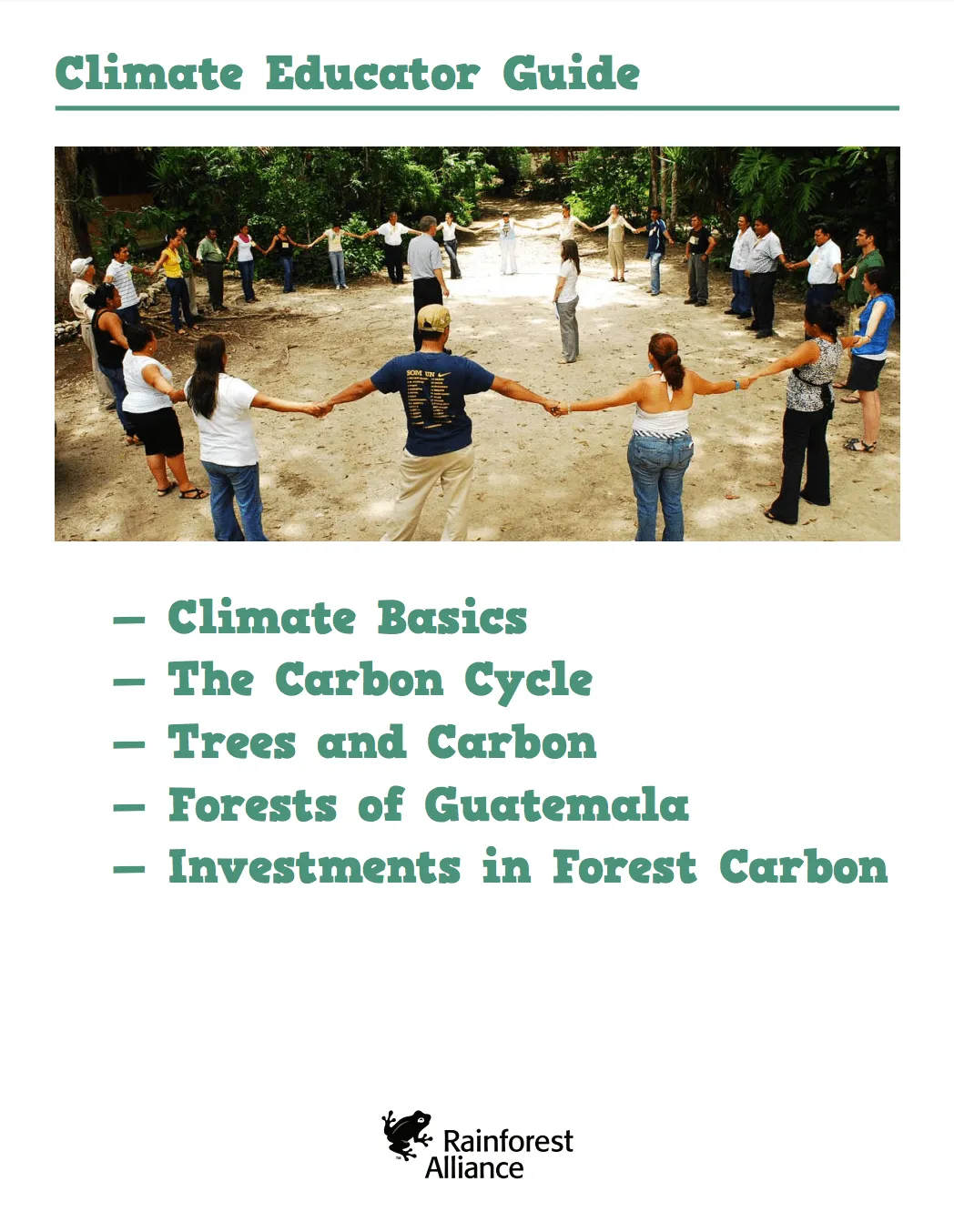Climate Educator Guide: A Guatemala Case Study
This free climate change lesson plan will walk your students through the basics of climate change using the rainforests of Guatemala's Petén region as an example.
Carbon is the fourth most abundant element on Earth and necessary for all life. Yet it is the same element which is a component of carbon dioxide (CO2), a greenhouse gas famous for its effect on Earth’s climate and rising temperatures.
During these lessons, students will begin to discover the relationship between CO2 and the Earth’s climate, as well as the intricate path of the carbon cycle and how carbon in the atmosphere is connected to living things. Students will also explore the role forests play in climate change, and how communities—such as Carmelita, Guatemala—are taking part in the United Nations initiative REDD+ to help protect forests while fighting climate change.
Activities
Activity 1: Climate Basics
Overview: The Earth’s climate is changing due to an increase of carbon dioxide (CO2) in the atmosphere. In this activity, students will explore the relationship between CO2 and climate by graphing changes in atmospheric CO2 over a 50-year period. They will also interview family members or neighbors to find out whether they have observed any climate changes in the area.
Activity 2: The Carbon Cycle
Overview: Earth has a fixed number of carbon atoms, which circulate among air, plants, animals, soil, and minerals by way of the carbon cycle. This activity uses a game to introduce students to the carbon cycle, and will help them see how carbon in the atmosphere is connected to living things.
Activity 3: Trees and Carbon
Overview: Forests store more carbon than any other land-based ecosystem. Tropical rainforests—like Guatemala’s Petén region—have the potential to store even more. In this activity, students will measure a tree to estimate the amount of carbon stored in it.
Activity 4: Forests of Guatemala
Overview: Students learn about the distribution of forest and humans around the world, and then analyze maps of the Maya Biosphere Reserve to determine recent changes in forest cover and to consider the causes of these changes.
Activity 5: Investments in Forest Carbon
Overview: Students consider what makes the forest valuable to people, and then read a case study about a community in the Petén gearing up to sell carbon credits based on carbon sequestered in the community’s forests.
About Our Curricula
The Rainforest Alliance curricula are unique in that it teaches language arts, math, science, social studies and the arts while addressing the Common Core State Standards (CCSS) for English language arts and mathematics, and the Next Generation Science Standards.
- Learn more about how our curricula adhere to these standards.
- Learn more about the terms and conditions of using our curriculum.
This curriculum was developed in collaboration with Project Learning Tree.
